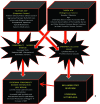Understanding the Epidermal Barrier in Healthy and Compromised Skin: Clinically Relevant Information for the Dermatology Practitioner: Proceedings of an Expert Panel Roundtable Meeting
- PMID: 28936279
- PMCID: PMC5608132
Understanding the Epidermal Barrier in Healthy and Compromised Skin: Clinically Relevant Information for the Dermatology Practitioner: Proceedings of an Expert Panel Roundtable Meeting
Figures




Similar articles
-
Sinecatechins Ointment, 15% for the Treatment of External Genital and Perianal Warts: Proceedings of an Expert Panel Roundtable Meeting.J Clin Aesthet Dermatol. 2016 Mar;9(3 Suppl 1):S2-S15. Epub 2016 Mar 1. J Clin Aesthet Dermatol. 2016. PMID: 29844847 Free PMC article. No abstract available.
-
Footprints of the EADV: a meeting report from the 17th Congress of the European Academy of Dermatology and Venereology.Br J Dermatol. 2009 May;160(5):938-45. doi: 10.1111/j.1365-2133.2009.09107.x. Epub 2009 Mar 20. Br J Dermatol. 2009. PMID: 19309366
-
American Health Foundation Roundtable on Healthy Weight. Proceedings of an expert panel discussion. New York, New York, September 20, 1994.Am J Clin Nutr. 1996 Mar;63(3 Suppl):409S-477S. doi: 10.1093/ajcn/63.3.409. Am J Clin Nutr. 1996. PMID: 8615329 Review. No abstract available.
-
Clinically relevant dermatology resources and the Internet: An introductory guide for practicing physicians.Dermatol Online J. 1999 Nov;5(2):8. Dermatol Online J. 1999. PMID: 10673461
-
Neonatal skin care.Pediatr Clin North Am. 2000 Aug;47(4):757-82. doi: 10.1016/s0031-3955(05)70239-x. Pediatr Clin North Am. 2000. PMID: 10943256 Review.
Cited by
-
Chimeric Antigen Receptor T Cell Therapy: A Novel Modality for Immune Modulation.Chonnam Med J. 2020 Jan;56(1):6-11. doi: 10.4068/cmj.2020.56.1.6. Epub 2020 Jan 22. Chonnam Med J. 2020. PMID: 32021836 Free PMC article. Review.
-
Sampling the skin surface chemistry for diagnosis and prognosis.Wound Repair Regen. 2022 Jul;30(4):509-525. doi: 10.1111/wrr.13030. Epub 2022 Jun 17. Wound Repair Regen. 2022. PMID: 35638724 Free PMC article.
-
Effect of Lumenato a Tomato derived oral supplement on improving skin barrier strength.Skin Res Technol. 2023 Nov;29(11):e13504. doi: 10.1111/srt.13504. Skin Res Technol. 2023. PMID: 38009018 Free PMC article. Clinical Trial.
-
Efficacy and Safety of the Genistein Nutraceutical Product Containing Vitamin E, Vitamin B3, and Ceramide on Skin Health in Postmenopausal Women: A Randomized, Double-Blind, Placebo-Controlled Clinical Trial.J Clin Med. 2023 Feb 7;12(4):1326. doi: 10.3390/jcm12041326. J Clin Med. 2023. PMID: 36835861 Free PMC article.
-
Attitudes, Beliefs, and Behaviors of Topical Antibiotic Prescribing among Primary Care Providers in Saudi Arabia: A Cross-Sectional Study.Antibiotics (Basel). 2024 Mar 27;13(4):301. doi: 10.3390/antibiotics13040301. Antibiotics (Basel). 2024. PMID: 38666977 Free PMC article.
References
-
- Harding CR. The stratum corneum: structure and function in health and disease. Dermatol Ther. 2004;17:6–15. - PubMed
-
- Proksch E, Elias PM. Epidermal barrier in atopic dermatitis. In: Bieber T, Leung DYM, editors. Atopic Dermatitis. New York: Marcel Dekker; 2002. pp. 123–143.
-
- Thiboutot D, Del Rosso JQ. Acne vulgaris and the epidermal barrier: is acne vulgaris associated with inherent epidermal abnormalities that cause impairment of barrier functions? Do any topical acne therapies alter the structural and/or functional integrity of the epidermal barrier? J Clin Aesthet Dermatol. 2013;6(2):18–24. - PMC - PubMed
-
- Dirschka T, Tronnier H, Folster-Holst R. Epithelial barrier function and atopic diathesis in rosacea and perioral dermatitis. Br J Dermatol. 2004;150:1136–1141. - PubMed
Publication types
LinkOut - more resources
Full Text Sources
